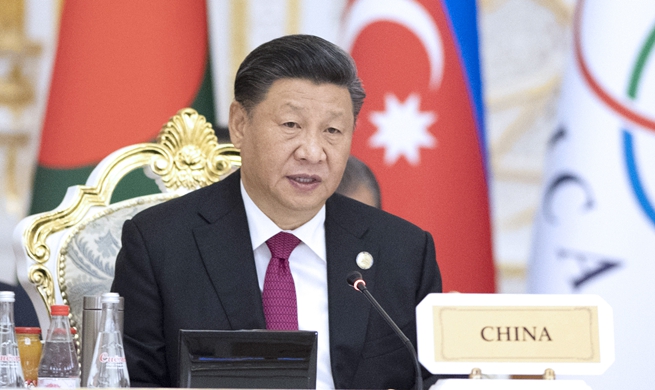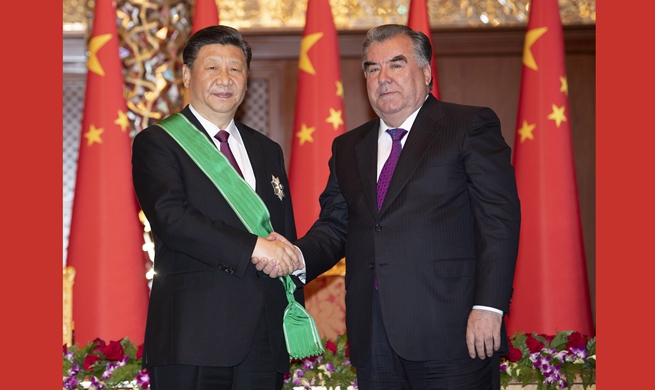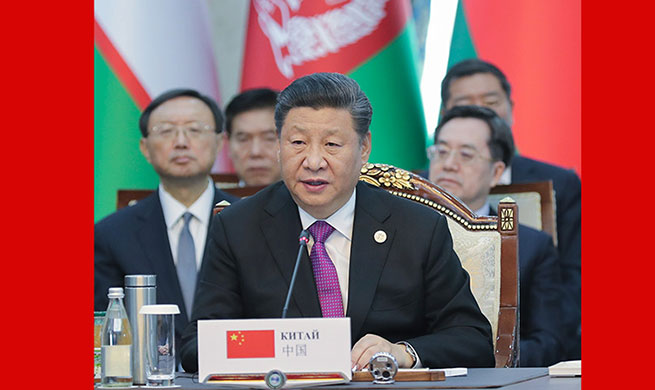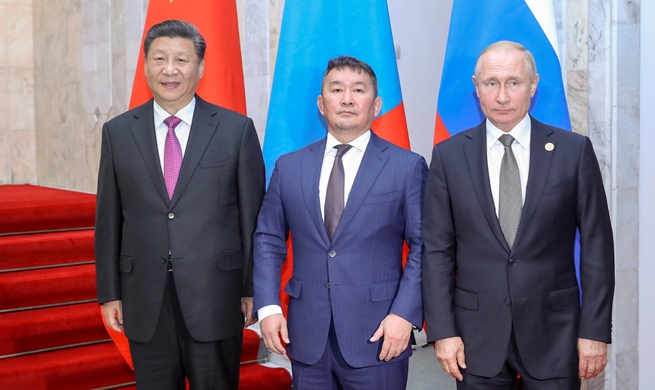LHASA, June 16 (Xinhua) -- A high-profile forum in the Tibet Autonomous Region attended by top local officials and international experts concluded Friday with a clear vision and plans for the region to open up and explore opportunities brought by the Belt and Road Initiative.
The Forum on the Development of Tibet, the sixth of its kind and the third that was held in Lhasa, the regional capital, demonstrates the plateau region's readiness to hear suggestions from the international society on development and opening up.
The event brought together around 70 overseas government officials, scholars, journalists and top officials in Tibet such as chairman Qizhala and top regional legislator Losang Jamcan.
Also present were local officials from all of the seven cities and prefectures in Tibet -- Lhasa, Xigaze, Shannan, Nyingchi, Chamdo, Nagqu and Ngari and directors of Tibetan regional government bureax.
While delivering a keynote speech at the forum, chairman Qizhala announced a new set of measures to further open up the region and sought international cooperation in infrastructure, trade, culture, finance and technology.
Tibet will actively promote the building of the Trans-Himalayan Multi-Dimensional Connectivity Network, he said.
Each Chinese province or region has different roles to play in the Belt and Road Initiative, and Tibet is an important region to seek cooperation with South Asian countries, said Wang Yanzhong, a researcher with the Chinese Academy of Social Sciences.
China hosted the second Belt and Road Forum for International Cooperation (BRF) in Beijing in April.
"By jumping on the Silk Road bandwagon, Tibet is opening wider to the rest of the world," said Shen Bing, an expert on regional economy at the Chinese Academy of Macroeconomic Research.
Xigaze, Tibet's second-largest city on the border, has excellent conditions to become a base for processing trade between China and South Asia, Shen said. It has six ports and 28 spots for border trade.
"Xigaze has over 400,000 members of its workforce with an average of 10 years of education. It should play a stronger role in the opening up of the region," Shen said.
Statistics show that Tibet's import and export trade was 4.8 billion yuan (about 693 million U.S. dollars) in 2018. Enterprises in the region invested about 280 million U.S. dollars in countries participating in the Belt and Road Initiative.
Rajiv Kumar Jha, chairman of Transhimalayan Friendship Society Nepal, said China and Nepal have witnessed increased trade volume, and Nepal has been the largest trade partner for Tibet in recent years.
"The Nepalis who have been residing in Tibet for generations are the best example of people-to-people exchange," he said, adding that he expects more people-to-people and cultural exchanges between the two sides.
Last year, Tibet hosted 30 million tourists, almost 10 times that of the population in the region.
"Tibet should be aware not to develop cheap tourism. It should develop ecological tourism that brings money to locals and conserves the environment," said Albert Ettinger, a Luxembourg scholar at the forum.
Losang Tsering, who owns a beer factory in Lhasa, expects new policies to open up and the Belt and Road development will bring convenience to his business.
"We are cooperating with an American firm to sell our products overseas. A more open Tibet is a very good thing both for companies and the people," he said. "It will be more convenient for us to import materials to make beer and export barley malt in the future."

















